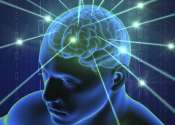Optogenetics captures neuronal transmission in live mammalian brain
Swiss scientists have used a cutting-edge method to stimulate neurons with light. They have successfully recorded synaptic transmission between neurons in a live animal for the first time.
Dec 24, 2014
1
0









